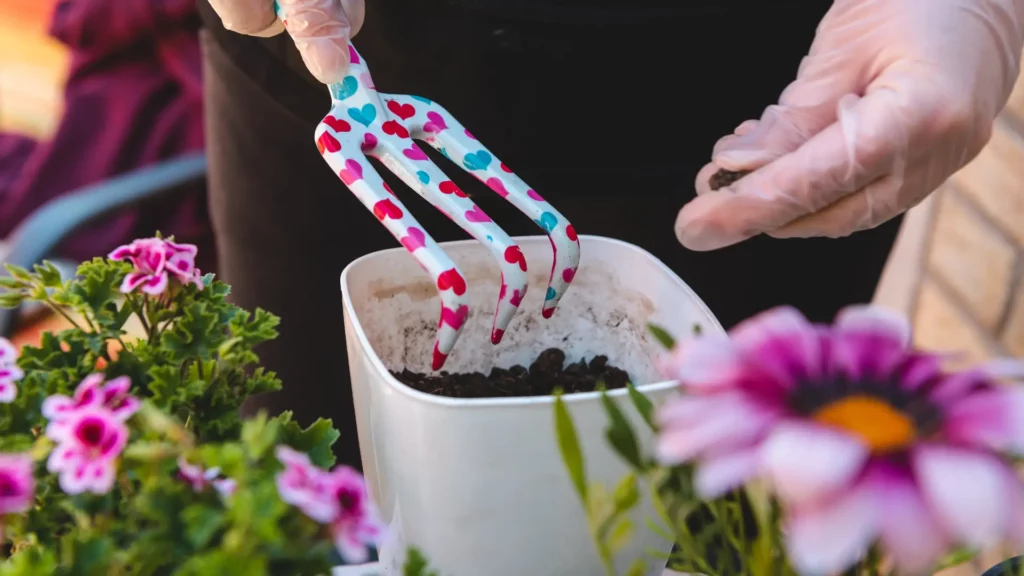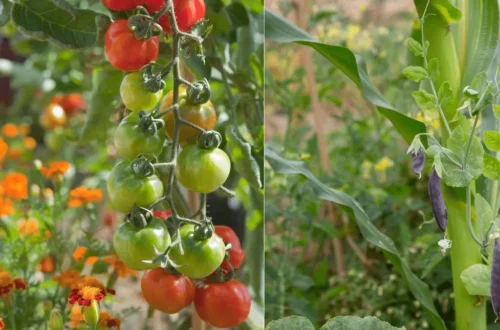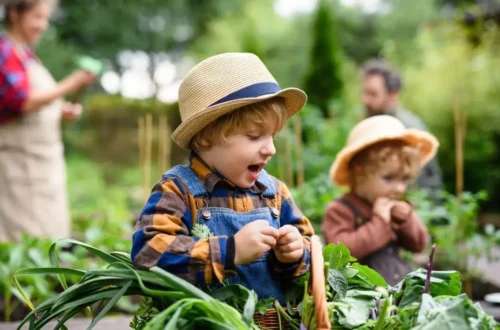Step-by-Step Guide to Preparing Soil for Planting Flowers

Preparing the soil before planting flowers is essential for creating the ideal growing environment and ensuring their successful growth. When it comes to gardening, soil is the foundation upon which everything else relies. Properly prepared soil provides the necessary nutrients, drainage, and structure for plants to thrive.
To start, remove any weeds, grass, or other vegetation from the area where you plan to create your flower bed. Use a flat spade to dig up the top layer of the soil, turning it over to expose the nutrient-rich bottom layer. This process helps to break up compacted soil and allows for better root penetration.
Adding organic matter, such as well-rotted manure or a mix of compost, is crucial for enriching the soil. Organic matter improves soil fertility, retains moisture, and enhances the soil’s structure. Aim for at least two to three inches of organic matter, spreading it evenly over the bed. Work the organic matter into the soil using a garden spade or fork.
By taking the time to prepare the soil before planting flowers, you are setting the stage for healthy and vibrant blooms. The effort you put into soil preparation will be rewarded with a thriving flower garden that brings joy and beauty to your outdoor space.
Creating a Healthy Foundation for Your Flower Bed with Digging
When it comes to creating a new bed for your flowers, digging is a common method that ensures proper soil preparation. Follow these steps to make a new flower bed:
1. Remove Vegetation: Start by clearing the area of any existing vegetation like grass or weeds. Use a garden spade or a glyphosate herbicide to effectively eliminate unwanted plants.
2. Turn the Soil: Using a flat spade or a garden spade, dig the area to loosen the soil. Turn the soil over, going to a depth of about 8 to 10 inches. Breaking up compacted soil allows roots to penetrate easily and promotes better drainage.
3. Add Organic Matter: Enhance the soil’s fertility and structure by incorporating organic matter such as compost or well-rotted manure. Spread a layer of about 2 to 4 inches of organic matter over the top of the turned soil and mix it in thoroughly.
By following these steps, you’re creating a suitable environment for your flowers’ roots to establish and flourish. A well-prepared flower bed sets the foundation for successful flower gardening.
Also read: Essential Steps for Preparing Soil for Blueberry Plants
Effortless No-Dig Flower Bed Creation
Creating a flower bed without the need for intensive digging can be achieved using the no-dig method. This alternative approach saves you time and effort while still providing a suitable environment for your flowers to thrive.
To start, clear the designated area of vegetation and remove any existing debris. Lay down a layer of newspaper, about 5-10 sheets thick, across the entire bed. This acts as a natural weed suppressant and helps retain moisture in the soil.
Next, add a generous layer of organic matter on top of the newspaper. This could include well-rotted manure, compost, or leaf mold. Aim for a depth of around 4-6 inches to provide ample nutrients for the plants.
To ensure the layers stay in place, gently water the bed. This will encourage the settling action and enhance stability.
Once the bed is prepared, you can proceed with planting your flower seeds or transplants. Simply make small holes through the newspaper layer, insert your plants, and cover the roots with soil.
By opting for a no-dig flower bed, you can create a nutrient-rich environment for your flowers while minimizing disturbance to the soil ecosystem.
Also read: The Ultimate Guide to Preparing Soil for Sod Installation
Soil Composition and Health
To ensure successful flower growth, it’s essential to understand the importance of soil composition and health. Here are some key points to consider:
Soil Composition
– Soil is made up of minerals, organic matter, water, and air.
– The ideal soil composition for flowers is a balanced combination of sand, silt, and clay.
– Each type of soil particle affects water drainage and nutrient availability differently.
pH Testing
– Testing the soil’s pH level is crucial to determine its acidity or alkalinity.
– Most flowers prefer a slightly acidic to neutral pH range.
– pH test kits are available at garden centers to help you determine the pH level of your soil.
Importance of Soil Health
– Healthy soil promotes root development, nutrient uptake, and overall plant growth.
– Adding organic matter, such as compost, improves soil structure and fertility.
– Soil rich in beneficial micro-organisms provides a healthy environment for flowers.
Remember, understanding your soil composition, conducting regular pH tests, and maintaining soil health are key factors in preparing the perfect environment for your flowers to thrive.
Also read: The Ultimate Guide to Preparing Soil for Grass Seed
Tips for Flower Selection
Flower gardening is a delightful way to add color and beauty to your outdoor space. When it comes to selecting flowers for your garden, it’s important to consider the soil type and climate. Here are some tips and insights to help you choose the right flowers for optimal growth:
1. Know your soil: Before selecting flowers, assess your soil type. Is it sandy, loamy, or clayey? Different flowers thrive in different soil conditions. For example, roses prefer well-drained, loamy soil, while asters tolerate heavier clay soil.
2. Consider the climate: Pay attention to the climate in your region. Some flowers are more suited to warmer climates, while others can withstand colder temperatures. Research which flowers are best adapted to your local climate for long-lasting blooms.
3. Choose native flowers: Native flowers are well-suited to the local environment, as they have adapted over time. They are often more resilient to pests and diseases and require less maintenance. Incorporating native flowers in your garden also supports local ecosystems.
4. Plan for continuous blooms: Select a variety of flowers with different bloom times. This will ensure a continuous display of color throughout the growing season. Mix annuals, perennials, and bulbs to create a diverse and vibrant flower garden.
Remember, proper soil preparation, including adding organic matter and maintaining soil health, plays a crucial role in the success of your flower gardening endeavors. By choosing the right flowers for your soil and climate, you can create a beautiful and thriving garden.
Also read: The Ultimate Guide to Fertilizing Soil for Healthy Plant Growth
Essential Know-How for Flourishing Flower Gardens
When it comes to successful flower gardening, having the right know-how is essential. Here are some important tips to keep in mind:
1. Watering:
Proper watering is crucial for the health and growth of your flowers. Make sure to water deeply and evenly, allowing the soil to absorb the water. Avoid overwatering or letting the soil dry out completely.
2. Fertilizing:
Provide your flowers with the necessary nutrients by fertilizing them regularly. Use a balanced, slow-release fertilizer that is appropriate for the specific needs of your flowers. Follow the recommended dosage and timing instructions for best results.
3. Mulching:
Mulching helps retain moisture, suppress weeds, and regulate soil temperature. Apply a layer of organic mulch, such as wood chips or compost, around the base of your flowers. Avoid piling the mulch directly against the stems to prevent rotting.
Remember, different flowers may have specific watering, fertilizing, and mulching needs. Consider the requirements of each flower variety and adjust your gardening practices accordingly.
Also read: The Ultimate Guide to Making Organic Soil for a Healthy Vegetable Garden
Flower Varieties for Your Prepared Flower Bed
When it comes to planting flowers in a prepared flower bed, there are several types to choose from. Here are three popular options that thrive in well-prepared soil:
1. Annuals: Annual flowers complete their life cycle in one growing season. They add vibrant colors and are perfect for filling in gaps or adding temporary splashes of color to your flower bed. Some popular annuals include marigolds, petunias, and zinnias.
2. Perennials: Perennial flowers come back year after year, making them a great long-term investment for your garden. They often have a longer blooming period and can provide year-round interest. Some popular perennials include roses, daylilies, and lavender.
3. Bulbs: Bulb flowers, such as tulips, daffodils, and hyacinths, are planted below the soil surface and emerge as beautiful blooms. They add a touch of elegance and variety to your flower bed. Bulbs should be planted in the fall for spring blooms.
When selecting flowers for your prepared flower bed, consider factors such as sunlight requirements, soil conditions, and climate suitability. By choosing a mix of annuals, perennials, and bulbs, you can create a visually stunning and dynamic garden that will bring joy throughout the seasons.
Remember to follow proper planting instructions for each type of flower to ensure they thrive in the prepared soil.
Also read: The Ultimate Guide to Preparing Your Garden Soil for the Next Year
Garden Tips for a Lush and Thriving Flower Garden
Maintaining a healthy and vibrant flower garden requires some essential tips and tricks. Here are a few things to keep in mind:
1. Watering: Ensure proper watering by understanding the water needs of different flower varieties. Water deeply and infrequently to encourage deep root growth.
2. Fertilizing: Apply a balanced fertilizer regularly to provide essential nutrients to your flowers. Use organic fertilizers for long-term soil health.
3. Mulching: Apply a layer of organic mulch around your flower beds to conserve moisture, suppress weeds, and regulate soil temperature.
4. Weed Control: Regularly check for and remove weeds, as they compete with your flowers for nutrients and water. Use natural or organic weed control methods to avoid harm to your plants.
5. Deadheading: Remove faded or spent flowers to encourage continuous blooming and prevent energy wastage on seed production.
6. Pruning: Trim back overgrown foliage and dead stems to improve airflow, promote new growth, and maintain the overall shape and health of your flowers.
7. Pest Management: Monitor your flower garden for pests and use integrated pest management techniques to control them without harming beneficial insects.
Remember to observe and learn from your garden, as each flower variety may have specific care requirements. With proper attention and these garden tips, you can create a flourishing flower garden that will bring joy and beauty to your outdoor space.
Also read: Step-by-Step: Preparing the Soil for Tomato Plants
Tools and Supplies for Soil Preparation
When it comes to preparing your soil for planting flowers, having the right tools and supplies is essential. Here are some items you may need to ensure a successful gardening experience:
1. Garden spade: A sturdy garden spade will be your best friend when it comes to digging up your flower bed and turning the soil.
2. Glyphosate herbicide: If you’re starting from scratch and need to remove existing vegetation, a glyphosate herbicide can help eliminate weeds and unwanted plants.
3. Compost or well-rotted manure: Adding organic matter is crucial for improving soil fertility and structure. Consider using a mix of compost or well-rotted manure to enrich the soil.
4. Topsoil or triple mix: If your existing soil is poor in quality, you may want to add a layer of topsoil or a ready-made triple mix to ensure your flowers have the best possible growth environment.
5. Leaf mold or mulch: Applying a layer of leaf mold or mulch around your flowers can help keep the soil moist and suppress weed growth.
6. Gardening tools: Don’t forget essential gardening tools like a rake, trowel, and pruners for general garden maintenance.
7. Garden center visit: Consider visiting a local garden center for expert advice, additional supplies, and a wide variety of flowering plants to choose from.
Also read: The Ultimate Guide to Soil Preparation for Your Garden
Remember, having the right tools and supplies will make your soil preparation process much smoother and set you up for a successful flower gardening experience.





